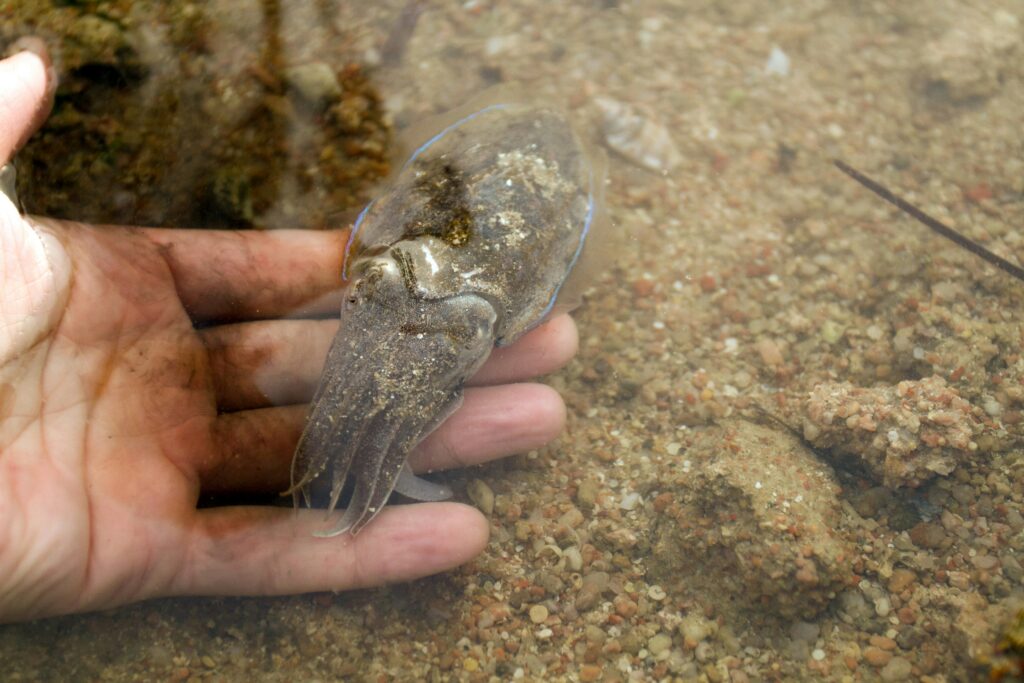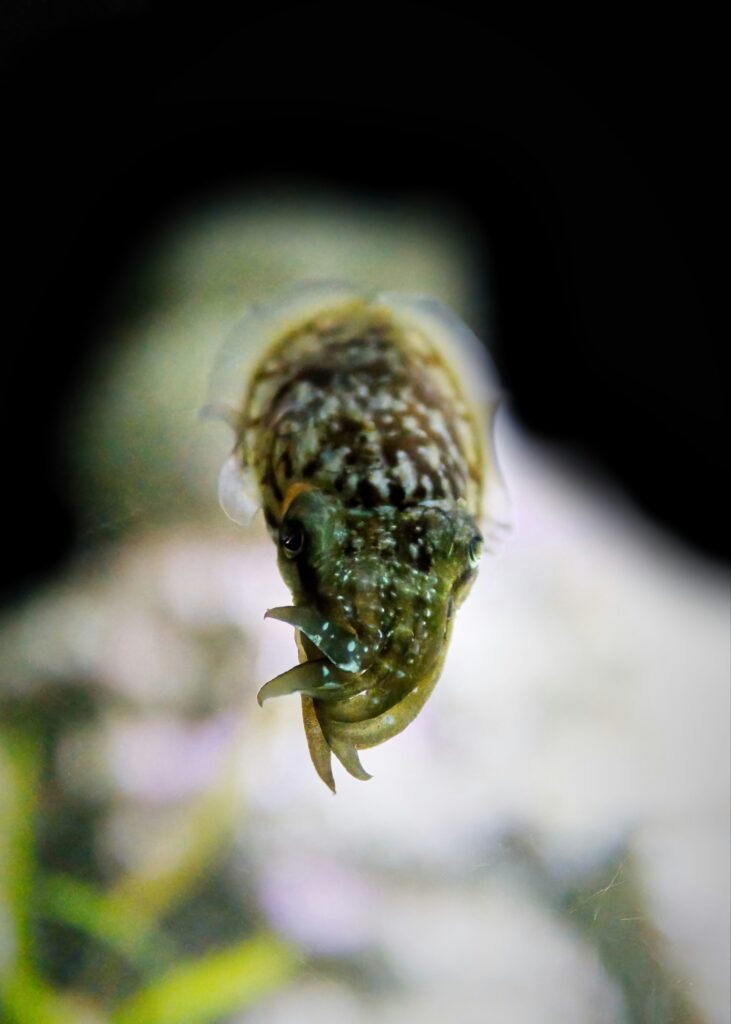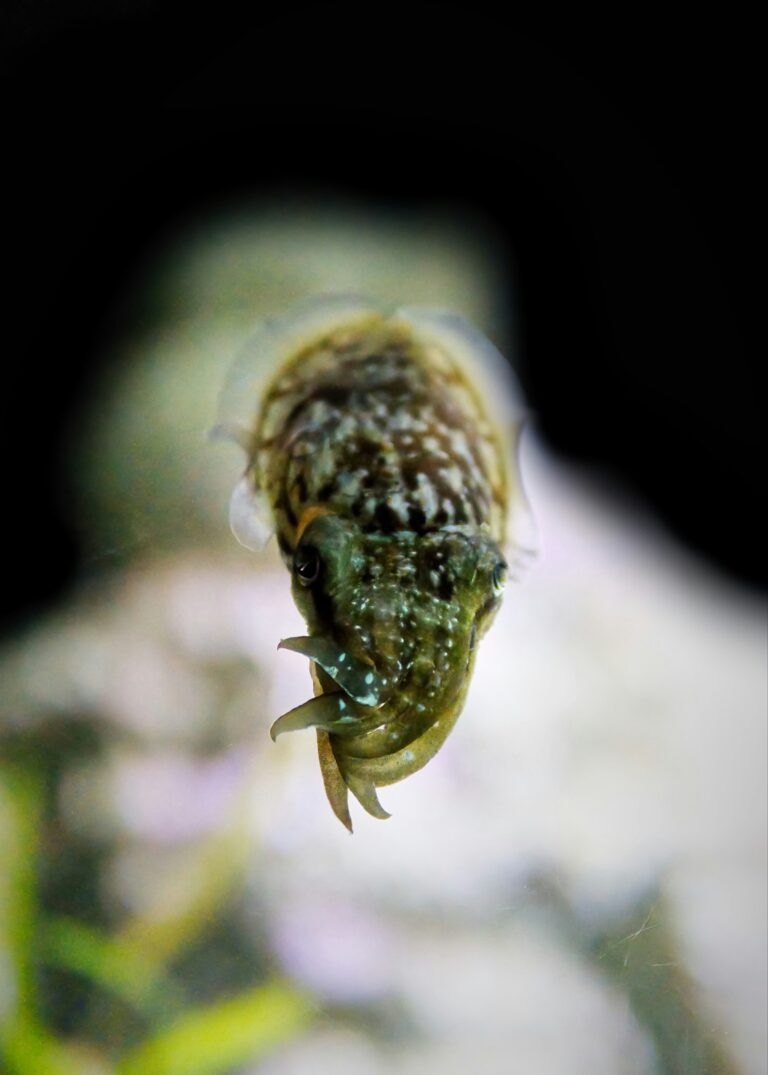Hook: Imagine a creature capable of blending seamlessly into its surroundings, changing colors and textures at will. This remarkable ability isn’t the stuff of science fiction but a reality found in the depths of our oceans, courtesy of the fascinating cuttlefish. Brief overview: In this blog post, we’ll explore the incredible intelligence and camouflage techniques of cuttlefish, shedding light on how these seemingly otherworldly creatures navigate their environment with unparalleled skill.
Chromatophores: The color-changing cells
Understanding Chromatophores
Chromatophores are specialized cells found in various animals, particularly in cephalopods like octopuses, squids, and cuttlefish, as well as certain reptiles, amphibians, and fish. These cells contain pigment granules that can expand or contract, allowing the animal to change its color rapidly.
Mechanism of Color Change
The mechanism behind chromatophore color change involves the movement of pigment granules within the cell. When the granules are dispersed throughout the cell, they absorb and reflect light in different ways, resulting in various colors. By contracting or expanding the chromatophores, the animal can manipulate the distribution of these pigments, effectively changing its appearance.
Adaptive Advantage
Chromatophores offer animals a remarkable camouflage ability, allowing them to blend seamlessly into their surroundings. This camouflage serves multiple purposes, including evading predators, ambushing prey, and even communicating with others of their species.
Biological Significance
The ability to change color through chromatophores is not only a form of camouflage but also serves as a means of communication and signaling within the animal kingdom. Some species use color changes to display dominance, attract mates, or convey messages to potential threats.
Research and Applications
Scientists are continually studying chromatophores to understand their mechanisms better and potentially apply them in various technological advancements, such as adaptive camouflage materials and responsive color-changing devices.
Textural changes and mimicry
Mimicry in Nature
Textural changes and mimicry play crucial roles in camouflage strategies adopted by many species. Mimicry involves imitating the appearance, behavior, or characteristics of another organism or object to gain a survival advantage.
Blending with the Environment
Some animals achieve camouflage not only through color but also by mimicking textures found in their surroundings. This can involve altering skin patterns, adopting shapes resembling natural objects, or even mimicking the texture of specific surfaces.
Examples in Nature
Numerous examples of textural mimicry exist in the animal kingdom. For instance, certain insects resemble leaves or twigs in appearance, while certain fish species mimic the texture of coral reefs or sandy seabeds to avoid detection by predators or prey.
Adaptive Strategies
Textural changes allow organisms to exploit their environment effectively, blending in seamlessly to avoid detection. This adaptation is especially crucial for species that rely on stealth for hunting or escaping predation.
Evolutionary Significance
The ability to mimic textures demonstrates the remarkable evolutionary adaptations that have evolved in response to selective pressures. Over time, organisms have developed increasingly sophisticated camouflage strategies to survive in their respective habitats.
Problem-solving skills in laboratory experiments
Cognitive Challenges
Problem-solving skills are essential cognitive abilities demonstrated by organisms across various laboratory experiments. In controlled settings, researchers often design tasks that require subjects to identify and implement solutions to specific challenges, testing their cognitive flexibility and reasoning abilities.
Experimental Paradigms
Laboratory experiments aimed at assessing problem-solving skills often involve tasks such as puzzle-solving, maze navigation, or object manipulation. Animals, particularly those with complex nervous systems like primates and certain bird species, are commonly used subjects in such experiments due to their advanced cognitive capabilities.
Insights into Intelligence
Studying problem-solving skills in laboratory settings provides valuable insights into the intelligence and cognitive capacities of different species. By analyzing how organisms approach and solve novel problems, researchers can gain a deeper understanding of the underlying mechanisms driving cognitive processes.
Applications in Research
The findings from laboratory experiments on problem-solving skills have significant implications for various fields, including neuroscience, psychology, and animal behavior. Understanding how different species tackle challenges can shed light on evolutionary adaptations, brain function, and learning mechanisms.
Future Directions
Continued research into problem-solving abilities promises to uncover more about the intricacies of cognition and intelligence across the animal kingdom. Moreover, insights gained from studying laboratory experiments may inform the development of artificial intelligence systems and cognitive enhancement strategies.
Learning and memory capabilities
Fundamental Cognitive Processes
Learning and memory capabilities are fundamental aspects of cognition that enable organisms to acquire, retain, and retrieve information from their environment. These processes play a crucial role in adaptation, allowing individuals to adjust their behavior based on past experiences.
Experimental Approaches
In laboratory settings, researchers employ various experimental paradigms to study learning and memory in animals. Classical conditioning, operant conditioning, and spatial learning tasks are common methodologies used to assess different aspects of cognitive function.
Neural Mechanisms
Understanding the neural mechanisms underlying learning and memory is a primary focus of cognitive neuroscience research. Studies have identified specific brain regions and neural circuits involved in encoding, consolidating, and retrieving memories, providing valuable insights into the biological basis of cognition.
Behavioral Flexibility
The ability to learn from experience and adapt behavior accordingly is essential for survival in changing environments. Animals with robust learning and memory capabilities can exhibit remarkable behavioral flexibility, adjusting their responses to new stimuli or challenges.
Practical Implications
Insights gained from studying learning and memory in laboratory experiments have practical applications in education, training, and rehabilitation. By understanding how individuals learn and retain information, educators and therapists can develop more effective strategies to enhance learning outcomes and cognitive functioning.
Predation and defense strategies
Ecological Dynamics
Predation and defense strategies are integral components of ecological interactions, shaping the dynamics of predator-prey relationships and influencing the distribution and abundance of species within ecosystems.
Coevolutionary Arms Race
Predators and prey often engage in a coevolutionary arms race, where each adapts strategies to outwit the other. Predators develop hunting techniques and specialized anatomical features for capturing prey, while prey species evolve defensive mechanisms to avoid detection or escape predation.
Behavioral Adaptations
Predators exhibit a range of hunting strategies, from stealth and ambush techniques to pursuit predation. Likewise, prey species have evolved various defensive behaviors, such as camouflage, warning signals, and mimicry, to deter or evade predators.
Trophic Interactions
The dynamics of predation not only affect the populations of predator and prey species but also ripple through entire food webs, influencing the abundance and distribution of other organisms within ecosystems. Keystone species, in particular, can have disproportionate effects on community structure through their predatory interactions.
Conservation Implications
Understanding predation dynamics is essential for conservation efforts aimed at preserving biodiversity and ecosystem stability. By identifying key predator-prey relationships and their ecological significance, conservationists can implement strategies to protect vulnerable species and restore balance to degraded ecosystems.


Impact on marine ecosystems
Marine Biodiversity
Marine ecosystems harbor a vast array of species, from microscopic plankton to apex predators like sharks and whales. The interactions between these organisms, including predation, competition, and mutualism, contribute to the overall biodiversity and functioning of marine ecosystems.
Trophic Cascades
Predation plays a crucial role in regulating marine food webs, with top predators exerting control over lower trophic levels. Disruptions to predator populations can trigger trophic cascades, leading to unpredictable shifts in community structure and ecosystem dynamics.
Overfishing and Depletion
Human activities, such as overfishing and habitat destruction, have led to the depletion of marine predator populations worldwide. The loss of key predators can have cascading effects on marine ecosystems, leading to changes in species abundance, distribution, and ecosystem services.
Conservation Challenges
Conserving marine ecosystems requires addressing threats to predator populations and their habitats. Implementing sustainable fishing practices, establishing marine protected areas, and reducing pollution are essential steps in safeguarding the health and resilience of marine ecosystems.
Global Implications
The health of marine ecosystems has far-reaching implications for human societies, as oceans provide vital resources, including food, livelihoods, and climate regulation. Protecting marine predators and maintaining balanced ecosystems is essential for ensuring the long-term sustainability of marine resources.
VIDEO CREDITS BBC
FAQs
Q. What makes cuttlefish masters of camouflage?
A. Cuttlefish are masters of camouflage due to their unique skin, which contains special cells called chromatophores, iridophores, and leucophores. These cells allow them to change color, texture, and even brightness to blend seamlessly into their environment.
Q. How do cuttlefish use their intelligence for hunting?
A. Cuttlefish use their intelligence for hunting by employing various strategies such as mimicry, ambush, and distraction. They can imitate the appearance and behavior of other animals to approach prey unnoticed or create distractions to catch their prey off guard.
Q. Are cuttlefish considered intelligent animals?
A. Yes, cuttlefish are considered highly intelligent animals. They demonstrate problem-solving skills, learning ability, and complex behaviors such as communication through body patterns and the use of tools.
Q. Can cuttlefish communicate with each other?
A. Yes, cuttlefish can communicate with each other through changes in their skin color, texture, and posture. They use these visual signals to convey information about their intentions, territorial boundaries, and potential threats.
Q. How do cuttlefish protect themselves from predators?
A. Cuttlefish employ various defense mechanisms to protect themselves from predators, including camouflage, ink secretion, and rapid jet propulsion to escape from danger. Their ability to blend into their surroundings effectively helps them avoid detection by predators.
Conclusion
- Recap of key points: From their evolutionary history to their intricate camouflage mechanisms and surprising cognitive abilities, cuttlefish emerge as true masters of their environment.
- Reflection: Studying cuttlefish not only offers insights into the marvels of nature but also underscores the importance of preserving marine biodiversity.
- Call to action: As we delve deeper into the mysteries of the ocean, let’s also strive to protect and conserve its inhabitants, ensuring a sustainable future for these remarkable creatures and the ecosystems they inhabit.
UP NEXT
The Impact of Ocean Conservation on Coastal Indigenous Livelihoods



